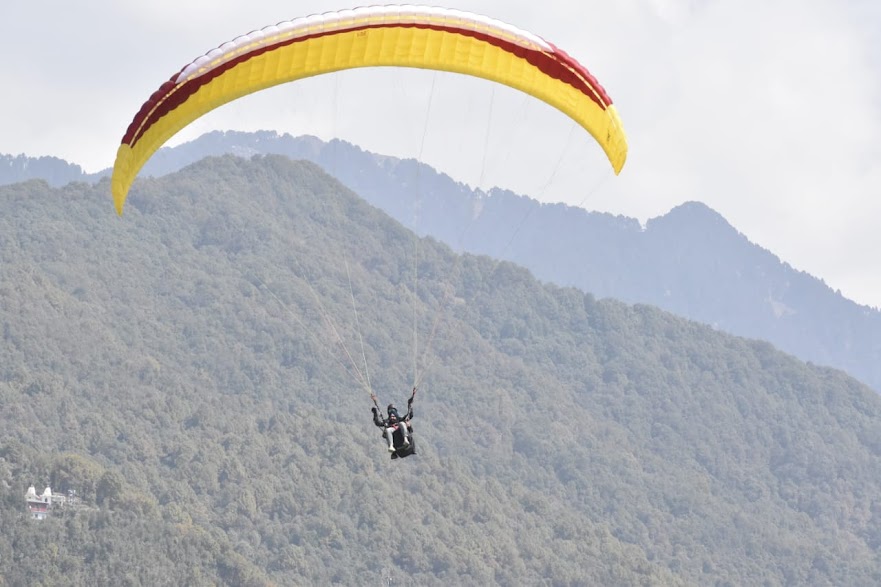How secure is paragliding in Bir Billing.Discover the thrill of flying safely above the stunning landscapes of Bir Billing! In this blog, we’ll delve into the security of paragliding in Bir Billing by examining essential safety practices, the importance of qualified pilots, the role of well-maintained equipment, and the impact of weather conditions. Learn how to ensure a safe and exhilarating experience in one of the world’s premier paragliding destinations.

Choose a reliable operator:
Choose an operator known for their commitment to safety and professionalism. Prioritize those with experienced, certified pilots who consistently follow international safety standards. Check reviews and get recommendations from reliable sources. For expert advice, reach out to the team at Birbillingadventure.com.

Licensed Operators and Pilots:
Paragliding in Bir Billing is strictly regulated, with operators required to hold licenses issued by the Tourism Department of Himachal Pradesh. Pilots must also be certified and have significant flying experience, particularly in the Bir Billing area. This ensures they are well-versed in both the art of paragliding and emergency procedures, making them better equipped to handle various weather conditions and provide a safe flight.
Safety measures
Ask the operator about their safety measures, including regular equipment inspections and maintenance practices. Inquire about their emergency protocols and how they manage unexpected situations.

Weather Monitoring
One of the critical aspects of safe paragliding is weather monitoring. In Bir Billing, flights are only conducted under optimal weather conditions. Operators keep a close eye on wind patterns, thermals, and other meteorological factors to decide whether it’s safe to fly.
Pre-Flight Briefing
Before taking off, pilots conduct a thorough briefing for their passengers. This briefing includes instructions on what to do during the flight, how to position oneself during takeoff and landing, and safety protocols to follow in case of an emergency.

Equipment maintenance
For a safe paragliding experience, it’s essential that equipment is regularly inspected and well-maintained. Ensure that the operator conducts routine checks on all gear, including the paraglider, harnesses, and helmets. Regular maintenance helps identify and address any wear and tear or potential issues, ensuring that the equipment remains in top condition and reliable for a secure flight.
Health and Fitness
Before taking off, make sure you are in good health and physically fit for paragliding. Inform your pilot of any medical conditions that could affect your flight.

Insurance
When paragliding, it’s important to confirm that you have appropriate insurance coverage. Verify that the operator offers insurance that covers potential accidents or injuries related to the sport. Additionally, consider purchasing your own travel insurance that includes adventure sports coverage. This extra layer of protection ensures that you’re financially safeguarded in case of unexpected incidents, providing peace of mind while you enjoy your flight.
Follow Instructions
Adhere to all instructions given by your pilot during the flight. Properly following these guidelines is crucial for your safety and the overall success of the flight.

Conclusion
Paragliding in Bir Billing is considered safe due to strict safety measures, experienced instructors, and advanced equipment. How secure is paragliding in Bir Billing? It’s well-regulated and safe for adventurers.
Tandem paragliding in Bir Billing provides a stunning chance to fly above the majestic Himalayas. For a safe and enjoyable experience, select a reputable operator, verify the pilot’s experience, adhere to safety standards, ensure equipment maintenance, check weather conditions, follow all instructions, and disclose any health issues. Prioritize your safety to fully enjoy the adventure with confidence. Happy flying!
FAQ
1. Is paragliding in Bir Billing safe?
ANS: Yes, it is generally safe due to strict safety measures, experienced pilots, and well-maintained equipment.
2. What safety measures are in place?
ANS: Measures include regular equipment inspections, certified pilots, pre-flight briefings, and weather monitoring.
3. How do I choose a safe operator?
ANS: Select operators with valid licenses, positive reviews, and certified pilots. Ensure they follow safety protocols.

